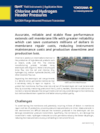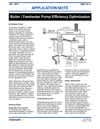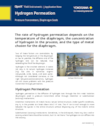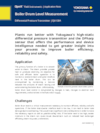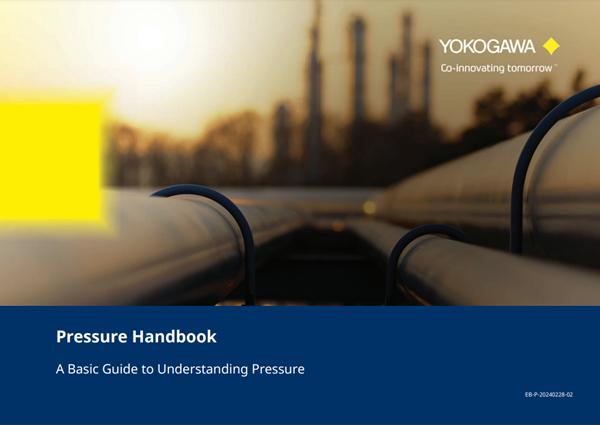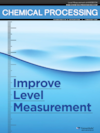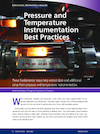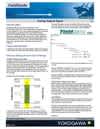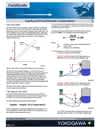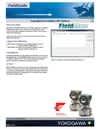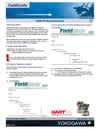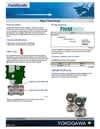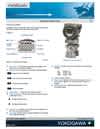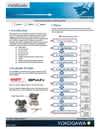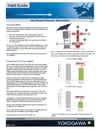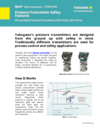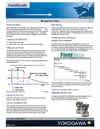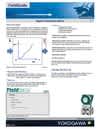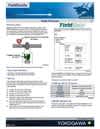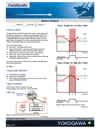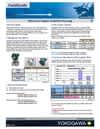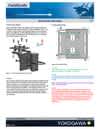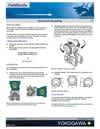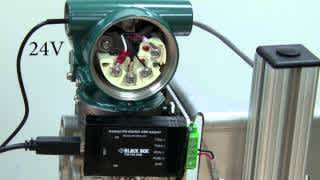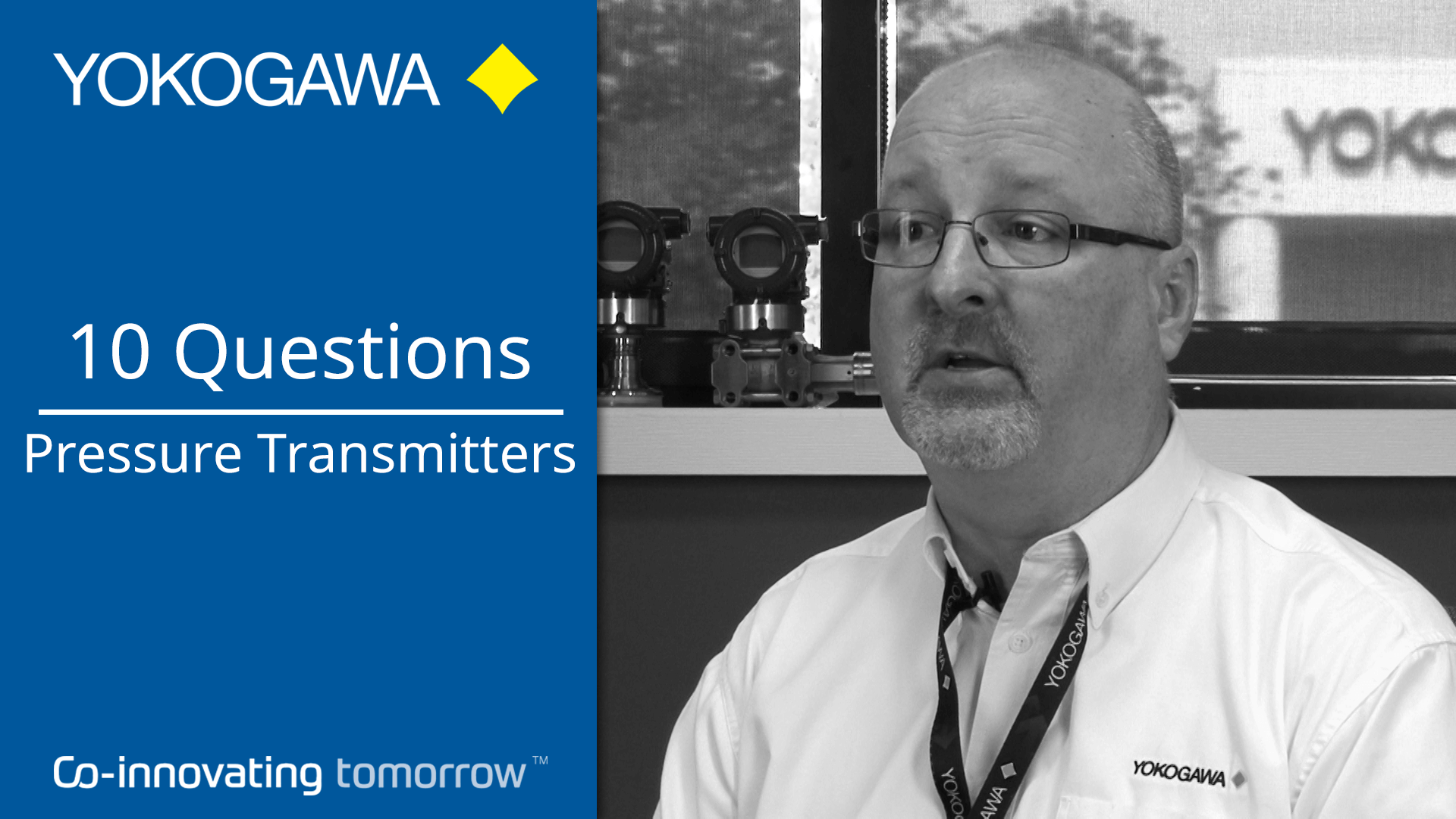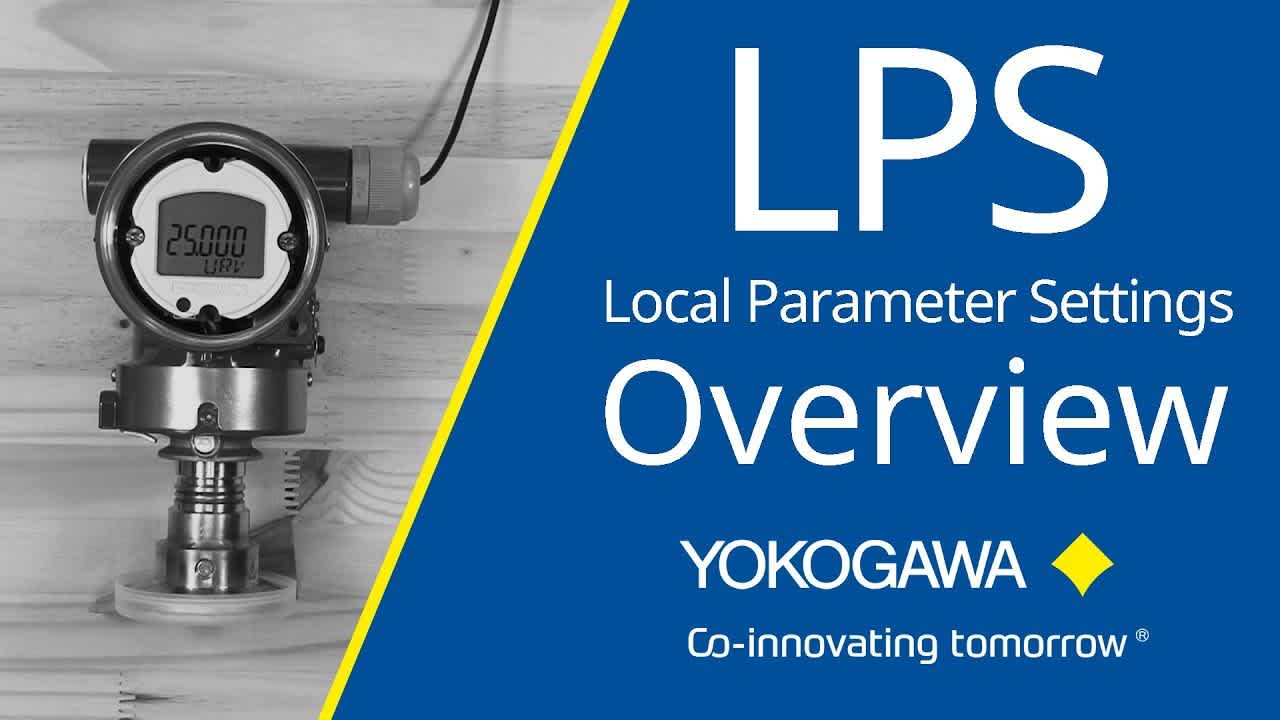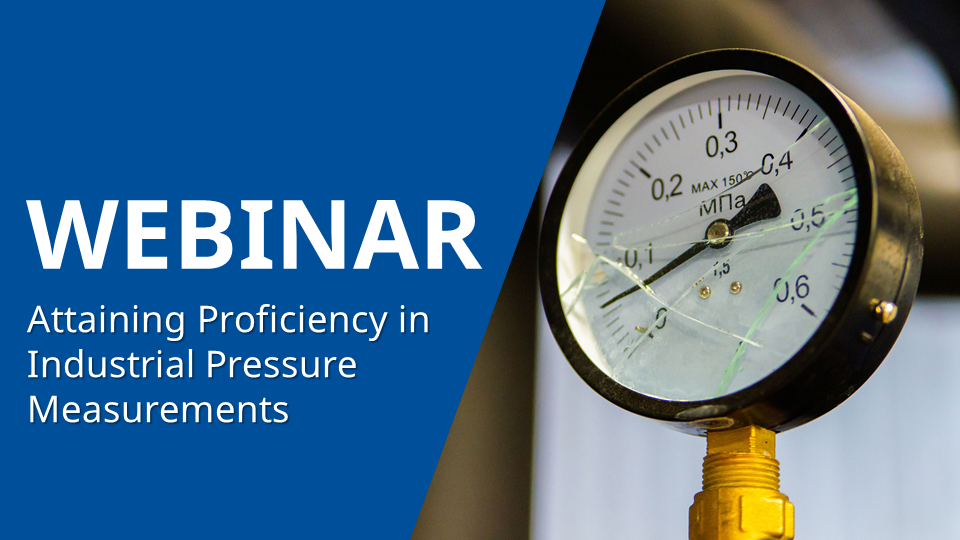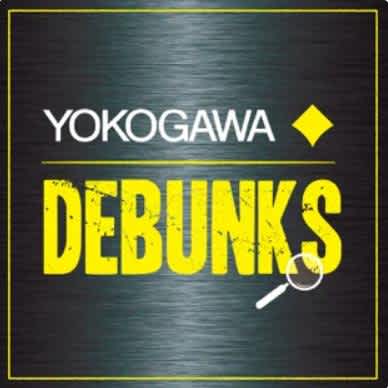What is a Pressure Transmitter?
Pressure transmitters are employed for gauging the pressure or level of liquids and gases within industrial settings. By providing accurate and reliable data for process control, pressure instrumentation enhances product quality, reduces total cost of ownership, and increases plant uptime. The pressure transmitters deliver high reliability across multiple process conditions, eliminating numerous application challenges thanks to the advanced DPharp pressure sensor technology. Learn more about the features and benefits of our DPharp pressure transmitters.
Optimize Plant Operations with Fewer Resources
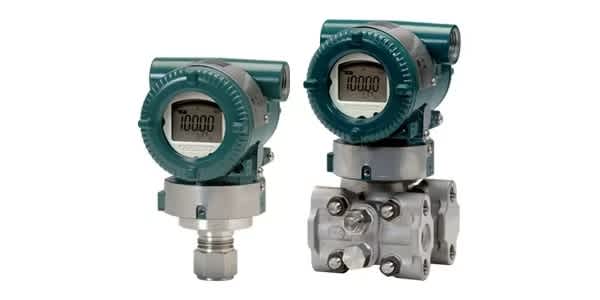 Yokogawa pressure transmitters do more than just provide accurate and reliable data for process control. DPharp pressure instrumentation helps achieve enhanced product quality, reduced total cost of ownership, and increased plant availability. Engineered with DPharp pressure sensor technology, our pressure transmitters deliver high reliability across a range of process conditions, eliminating numerous application challenges.
Yokogawa pressure transmitters do more than just provide accurate and reliable data for process control. DPharp pressure instrumentation helps achieve enhanced product quality, reduced total cost of ownership, and increased plant availability. Engineered with DPharp pressure sensor technology, our pressure transmitters deliver high reliability across a range of process conditions, eliminating numerous application challenges.
-
Gauge Pressure
Compare pressures relative to atmospheric measure with traditional and in-line mount transmitters.
-
Differential Pressure Transmitters
Monitor and communicate pressure measurements with traditional mount or remote diaphragm seal mount transmitters.
-
Absolute Pressure
Maintain accurate, repeatable measurements with a wide range of pressure transmitters. -
Diaphragm Seal System
Protect transmitters’ pressure-sensing assemblies with field-proven diaphragm seal solutions.
-
Wireless Differential Pressure/Pressure Transmitters
Experience process insights and improved productivity with superior wireless measurement technology.
- EJX110B Wireless Differential Pressure Transmitter
- EJX118B Wireless Differential Pressure Transmitter with Remote Diaphragm Seals
- EJX210B Wireless Flange Mounted Differential Pressure Transmitter
- EJX310B Wireless Absolute Pressure Transmitter
- EJX430B Wireless Gauge Pressure Transmitter
- EJX438B Wireless Gauge Pressure Transmitter with Remote Diaphragm Seals
- EJX510B Wireless In-Line Mount Absolute Pressure Transmitter
- EJX530B Wireless In-Line Mount Gauge Pressure Transmitter
- Product Finder
- XS110A Wireless Pressure Sensor - Wireless Pressure Monitoring
-
Liquid Level
Transmit and monitor information accurately and consistently with remote seals and transmitters.
-
Pressure Accessories
Avoid costly shutdowns with pressure accessories that simplify maintenance and troubleshooting.
-
Multivariable Transmitters (Mass Flow/Multi-sensing)
Measure differential pressure, static pressure, and external temperature in one device.
-
Differential Pressure (DP) Flow
Simplify flow measurement with streamlined, cost-effective devices.
-
Low Flow Integral Orifice
Optimize linearity and repeatability with advanced, rugged technologies.
-
Product Finder
This web tool makes it easier to find products according to the application, measurement conditions and required specifications.
Details
What Are the Benefits of Pressure Transmitters?
With improved digital performance, measurement accuracy, and overpressure protection, DPharp pressure transmitters contribute to enhanced product quality.
Digital Performance
Other pressure sensor technologies require an analog-to-digital conversion before the signal can be processed, introducing additional errors. In Yokogawa’s pressure transmitters, the DPharp sensor directly outputs a digital signal, eliminating the need for analog-to-digital conversion and improving performance.
Accuracy Under All Operating Conditions
 Fluctuations in static pressure and temperature cause errors in differential pressure measurement. Analog sensors can only measure DP and sensor temperature and therefore can only compensate for temperature effect.
Fluctuations in static pressure and temperature cause errors in differential pressure measurement. Analog sensors can only measure DP and sensor temperature and therefore can only compensate for temperature effect.
Yokogawa’s DPharp digital pressure sensor measures the differential pressure (DP), static pressure (SP), and sensor temperature from a single sensor. Given these three pieces of process data, our differential pressure transmitters compensate the DP measurement for temperature effect and static pressure effect in real-time. This compensation is referred to as Dynamic Compensation and improves DP measurement accuracy.
Learn more about Dynamic Compensation.
What Happens When a Transmitter Sensor Is Exposed to Overpressure?
Overpressure events such as incorrect sequencing of a manifold during start-up or shutdown and process upsets can damage analog sensors, requiring the transmitter to be recalibrated - or even replaced - in order to return it to normal operations.
The simple, robust design of Yokogawa's DPharp pressure sensor makes it less susceptible to overpressure events. A mechanical system within the transmitter provides additional overpressure protection by equalizing the excessive pressure before it reaches the sensor. Once it returns to normal operating pressure, the transmitter returns to operation within the defined accuracy and stability specifications with no need for recalibration. The Yokogawa DPharp sensor has a more significant operational envelope compared to an analog sensor, allowing you to run your control loop at your desired set-point regardless of process conditions.
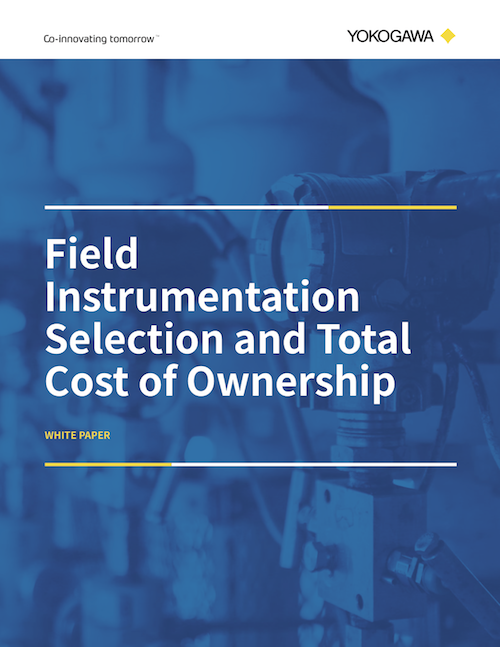 How to Reduce Total Cost of Ownership for Field Instrumentation?
How to Reduce Total Cost of Ownership for Field Instrumentation?
DPharp pressure transmitters are certified to high safety standards as well as international standards and require fewer calibrations. Multi-sensing and universal mounting features eliminate the need to manage multiple transmitters, reducing total maintenance costs.
Safety as Standard
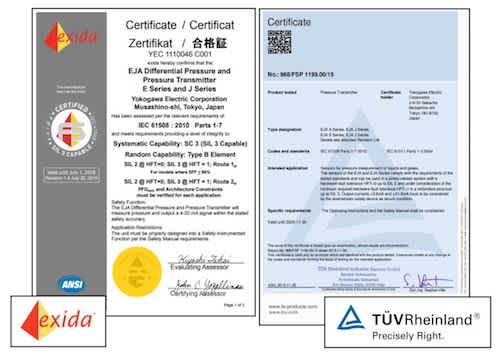
As standard, all Yokogawa transmitters are certified for single transmitter use in SIL2 safety applications and dual transmitter use in SIL3 safety applications. The same transmitter can be used for both process control and safety applications. Managing two separate transmitter models is no longer necessary, reducing spares inventory and simplifying daily operations.
Extended Calibration Check Intervals
When devices are initially installed, they operate at peak performance, but what happens after they are running under various process conditions and poorly managed or maintained?
Changing operating conditions can cause transmitters to drift to the point where they are no longer able to make accurate measurements for the process loop they are installed in, resulting in poor quality or an impact to product yields. This requires a calibration check interval to ensure you’re operating within desired error limits.
The DPharp sensor has an unconditional long-term stability guarantee of ±0.1% up to 15 years under all operational conditions, reducing calibration frequencies. As you gain experience with these transmitters, the interval between calibration checks is extended. Long-term this can help reduce your maintenance cost by up to 34%. Spend your time where it is needed.
Independent Third-Party Verification
With the rapid globalization of markets, numerous international standards and approvals are becoming necessary. Yokogawa pressure transmitters have acquired various international certifications including FM, CSA, ATEX, IECEx, INMETRO, KOSHA, EAC, and NEPSI.
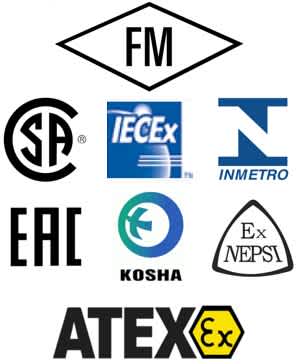
Multi-Sensing in DP Applications
Other suppliers' transmitters use analog sensors, which require two separate transmitters for any application that needs both differential pressure (DP) and static pressure (SP) measurements.
Yokogawa's differential pressure transmitter features our multi-sensing DPharp sensor, which can measure both process variables (DP and SP) with a single transmitter, saving you the cost of a gauge pressure transmitter as well as the manifold, piping, wiring, I/O, construction, and engineering man-hours associated with it. With our DP transmitter, there are fewer devices to manage, maintain and calibrate, lowering overall lifecycle costs.
Standard Communication Protocol
Yokogawa transmitters support all industry-standard field device communication protocols. Interoperability and interchangeability can be ensured. Use all the same tools and work procedures as before. Yokogawa transmitters are available with analog 4 to 20mA signal with either BRAIN® digital protocol or HART® digital protocol; Low Power analog 1 to 5 VDC with HART® digital protocol; or all digital FOUNDATION® Fieldbus or PROFIBUS® PA protocol.
Universal Mounting
Pressure transmitters on the market have several different flange configurations depending on the medium being measured (gas or liquid). This requires plants that process both mediums to maintain a stock of both types of configurations.
Yokogawa's pressure transmitters offer a universal mount that can be configured to handle either gas or liquid; reducing your inventory of replacement transmitters.
How Are Pressure Transmitters Built?
DPharp pressure transmitters are engineered to withstand the harshest process conditions, featuring a rugged construction design and less susceptibility to overpressure events for a longer-lasting transmitter.
Rugged Construction
Harsh environments can reduce the life of your instrumentation, causing maintenance issues and plant downtime. Yokogawa’s ruggedly constructed pressure transmitters feature a four-bolt pressure-retaining design, Teflon® coated 316L stainless steel flange gasket, and a dual seal certified to ANSI/ISA 12.27.01. These design features extend the life of your transmitter, increasing plant availability.
How Does Overpressure Protection Work?
During improper manifold sequencing, startup and shutdown conditions, or process upsets, overpressure can occur. The simple, robust design of Yokogawa's DPharp pressure sensor makes it less susceptible to overpressure events. A mechanical system within the transmitter provides additional overpressure protection by equalizing the excessive pressure before it reaches the sensor. Once stable process conditions return, these features enable the transmitter to return to normal operation within the published specifications.
Local Indicator
Easy to read indicator provides all the information you need. The indicator can display any of the variables measured (DP, SP, Capsule temperature); alarm codes with short text; and a sweeping bar graph to give a graphical representation of the process. Fully programmable, the indicator is customizable for your needs. Unlike other suppliers' transmitters, the indicator is not driven off the 4 to 20mA analog signal, but, exists as a separate circuit allowing the display to operate independently from the output signal.
Resources
Corrosion, permeation, or drift can cause a degradation of pressure measurement readings, which, in turn, can put the electrolysis cell out of balance and risk damage to the cell membranes.
The primary function of a utility boiler is to convert water into steam to be used by a steam turbine / generator in producing electricity. The boiler consists of a furnace, where air and fuel are combined and burned to produce combustion gases, and a feedwater tube system, the con- tents of which are heated by these gases.
Hydrogen is the simplest and smallest atomic element. Water, acids, bases, and the immense family of organic compounds all contain hydrogen. Even though hydrogen is not corrosive, it can cause problems for pressure transmitters through Hydrogen Permeation.
DPharp performance in boiler drum level measurement applications is superior to metallic capacitance type pressure transmitters. Improved performance can be attributed to the unique resonant silicon sensor design with dual resonators.
Download this eBook and learn:
- The basic physics of pressure
- Different types of pressure sensors
- Features of pressure transmitters
- Pressure transmitters communications standards
- Key characteristics of pressure
- Common types of diaphragm seals
Overcome Temperature Challenges. Correct common conditions for better level measurement.
Pressure and Temperature Instrumentation Best Practices:
These fundamental steps help extract data and additional value from pressure and temperature instrumentation.
Discover how Output Signal Low Cut helps stabilize transmitter output in low-flow applications by filtering out erratic signal behavior.
Extend your differential pressure transmitter's range with affordable isolation solutions, shielding it from extreme process temperatures and corrosive fluids.
Discover the safety features built-in to the Yokogawa digital pressure sensors (DPharp).
Downloads
Brochures
- Overcome Temperature Effects for DP Level (778.1 KB)
- Anatomy of a Pressure Transmitter Poster
- Scaling Hydrogen- A Comprehensive Solution Across the Entire H2 Ecosystem (7.1 MB)
- Electrolysis Solutions: Instrumentation Solutions for Electrolysis Plant Applications (841.1 KB)
- Preserving Our Water Resources One Drop at a Time (6.5 MB)
- Mining Solutions (3.2 MB)
General Specifications
Certificates
- EJA-E Exida SIL Certificate (128.1 KB)
- EJX-A Exida SIL Certificate (128.1 KB)
Engineering Tools
- CMPL - EJA210E (Pressure-detector Section) (241 KB)
- Drawings - EJA110E (High Damping Option) (466 KB)
- Drawing - EJXC40A Master Transmitter (346.1 KB)
- Drawing - EJXC40A Slave Transmitter (242.9 KB)
Videos
Join Applications Engineer Michael Keller as he guides you through the steps for connecting the EJX910 Modbus with the USB Modbus converter.
How much do you know about pressure transmitters? Are you accurately, quickly and reliably measuring pressure? Ultimately, the drive of any good pressure transmitter is to get an accurate, reliable pressure measurement to the data user quickly. This video gives you the answers to your basic questions about pressure and pressure transmitters.
Yokogawa’s Local Parameter Setting (LPS) featured in our Pressure Transmitters helps you set 9 parameters without the use of a handheld communicator.
Join this webinar to better understand which manifolds you should use for specific applications and conditions. You will learn:
- A brief history of manifolds
- An overview of the different types of manifolds that are available
- The advantages, disadvantages, and application considerations you should consider when selecting a manifold
Every good ship (or plant operation) needs trusty pressure transmitters to navigate choppy waters safely. But beware—choosing the wrong one could send you straight to Davy Jones’ locker of inefficiency!
Join our expert crew as we hoist the sails and explore:
- The basic physics of pressure – Understanding the forces that keep your ship afloat (or your processes steady).
- Types of pressure sensors – A treasure map to the best tools for the job.
- Sensor technology comparisons – Sorting the gold from the fool’s gold.
- Installation considerations – Avoiding the hidden traps of poor placement.
- Operation and calibration best practices – Keeping your pressure shipshape.
- Advanced pressure applications – Discovering the secret islands of efficiency.
Addresses productivity challenges in the chemical industry and how digital field instruments can improve productivity.
Is it true that 4-20 mA HART will be phased out in the near future? Is a transducer equal to a transmitter? Tune in to hear the debunking of these myths.
News
-
News Brief Aug 2, 2019 Yokogawa Wins Bulk Order to Supply 1,350 Pressure Transmitters to Argentine National Oil Company
-
Press Release | Solutions & Products Oct 23, 2014 Yokogawa Targets Upstream Oil and Gas Applications with Release of New Low-power DPharp Series Differential Pressure/Pressure Transmitters
- Aiming for the top position in the global sensor market -
-
Press Release May 24, 2013 Yokogawa Releases Enhanced EJA Series Pressure Transmitter in North American Market
Looking for more information on our people, technology and solutions?
Contact Us